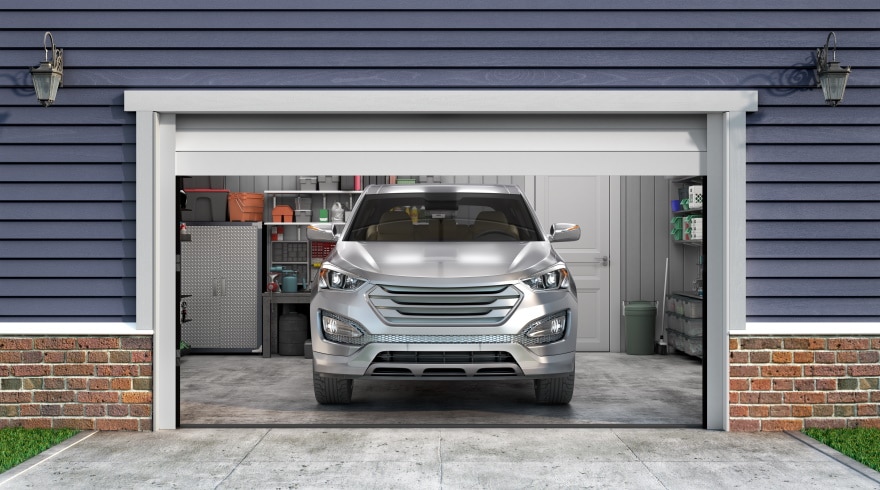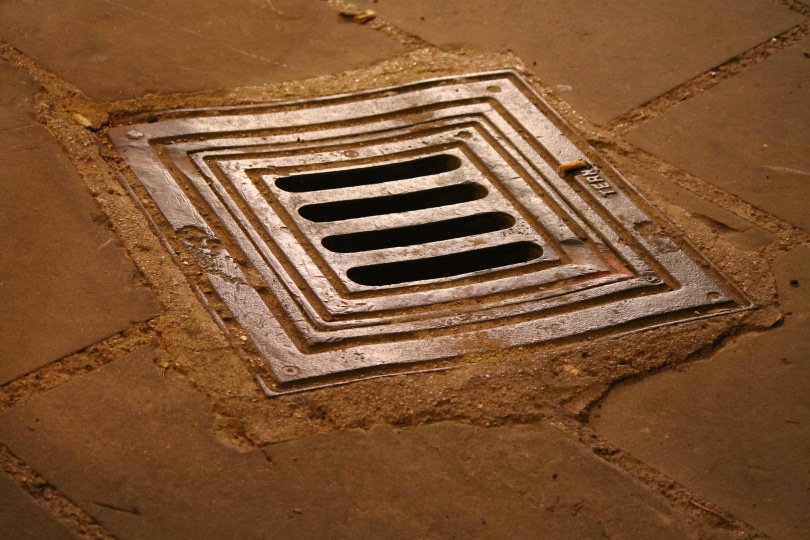2 Different Types Of Garage Floor Drains. What You Need To Know!
-
- Last updated:

When water is allowed to sit and pool, it can create a slip hazard, can damage anything that comes in regular contact with it, and it can also spread bacteria and diseases. Essentially, you should install a drain anywhere that water might pool and gather and where it could pose a danger. This includes in the garage.
If you’ve already experienced pooling water in the garage, you will understand the importance of having a drain, but it is better to pre-empt the problem by installing a sloping floor that runs off to a drain. The best time to install such a drain is before the cement is poured, but even if you have an old garage with an existing floor, it is still possible to install a beneficial and efficient drain.
Below, we look at the two different types of garage floor drain. We look at when each type of drain is best, the pros and cons of each, and other factors concerning the installation of these essential pieces of garage equipment.

The 2 Types of Garage Floor Drain
Whether you use the garage purely for overnight car storage, or you have it set up as a home gym that doubles up as long-term storage, drainage is important. There are really only two different types of garage floor drain available: trench floor drains and round/square floor drains.
1. Trench Floor Drain

A trench floor drain is a long trench that usually runs the entire length or breadth of the garage. The trench is covered with a grate, which prevents dirt and debris from getting in but also stops the trench from becoming a major trip hazard. Once water is in the trench it runs off to a sewage system, septic tank, or some other wastewater solution.
The size of the trench is normally determined by the amount of wastewater that it will collect. Those that will be expected to collect large volumes of liquid need to be dug deeper. Garage trench drains are usually quite narrow and shallow.
Although a trench grate cover will usually be made of metal, they can be made of other materials, but they need to cover the full length of the trench to be effective.
The trench floor drain covers a lot of area, which means that it can handle large volumes of water. They are relatively easy to install, although they do require digging into the concrete floor and ensuring that the ground is sloped or cambered towards the drain.
Although beneficial, the trench floor drain can prove an expensive installation if the garage floor has already been laid. The floor may need altering and you will either need heavy tools to cut the trench yourself or will have to pay a professional installation service to do the job for you.
- Capable of handling large volumes of water
- Don’t clog easily so minimal maintenance
- Available in lengths so can be customized to your garage dimensions
- Expensive to install
- Difficult to install yourself
Find a flooring specialist in your area, and get free, no-commitment estimates for your project.Consult a flooring expert

2. Round/Square Floor Drain

The other garage floor drain option is a square or round floor drain. Although the shape differs, the principle and the materials and processes are exactly the same, whatever the shape of the drain.
These are much smaller than trench drains and can be seen in wet rooms and bathrooms, as well as in some public spaces. In most instances, the floor of a room will be sloped into the center, where the floor drain is found.
This type of drain is much smaller than a trench drain, which has pros and cons.
Square drains take a lot less digging or cutting into the concrete, which means that installation is simpler and less expensive than with a trench drain. However, the limited size of the drain means that they cannot cope with as much water, and they become clogged and blocked up much more easily.
- Easy to install
- Cheaper than trench drains
- Smaller, so takes up less room
- Clogs more easily and requires regular cleaning
- Cannot handle large amounts of water

Does A Garage Really Need a Floor Drain?
Whether you use your garage for car storage or any other purpose, it is likely that water will get in. This is especially true if you have a large garage door. Rain will get in when the door is open, and without a drain, it has nowhere to run so will sit on the floor surface, potentially causing a slip hazard and even encouraging bacteria. A drain with a trap can also be used to collect other liquids, such as oil or paint, depending on what you use the garage for. In most cases, a garage will definitely benefit from having some kind of floor drain.

Do You Need A Trap In A Garage Floor Drain?
Most garage drains have some type of trap, whether it is a simple P trap or another kind. These prevent oil and other contaminants from reaching your garden or making it into the wastewater system. Local building regulations may legally require that effective traps be installed as part of the garage drain, and you should check before you fit a new drain.
Where Does A Garage Floor Drain Go?
Essentially, a garage floor drain can go anywhere. It can be connected to the sewage system or to a septic tank system. It could lead to a sump pit. Alternatively, a pipe can run from the garage drain to the garden or a water butt, allowing you to use the wastewater in your own garden.

How Deep Should A Garage Floor Drain Be?
The exact depth of the floor drain will depend on the type of drain, as well as the amount of water that it will have to cope with. Most trench drains are around 6 inches wide and measures approximately 8 inches deep. The exact measurements of your garage drain may be larger or, in some cases, smaller.

Conclusion
Garages tend to have some degree of damp or level of moisture. They have giant doors that are opened to the elements a few minutes at a time, so no matter how effective the seal around the door, rainwater will still get in.
Water can come from other sources, too, and regardless of the water source, it can create a slippery floor surface. Undrained water that sits and pools may also become a breeding ground for bacteria.
A garage floor drain helps prevent these problems by draining water away safely, and one can also remove oil and other liquid substances from the garage. The two main options of garage floor drain are the trench drain and the square or round floor drain.
Featured Image Credit: studiovin, Shutterstock
Contents

